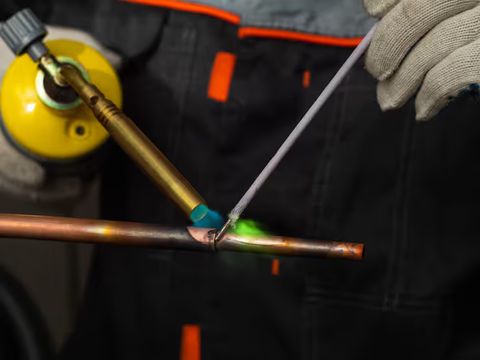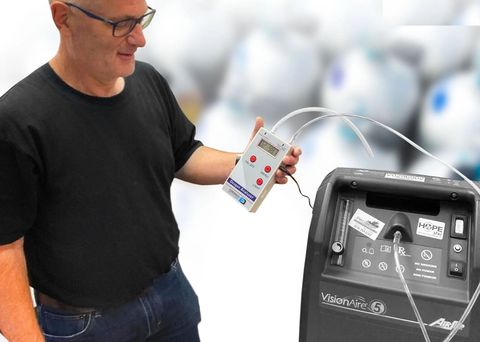Insights into Pipe Laser Alignment, Features, and Best Practices
Pipe laser alignment refers to the precise positioning and direction-setting of underground or above-ground pipes using laser technology. These devices project a laser beam along the desired alignment path, helping workers ensure that pipes are laid straight and at the correct gradient.
This technology emerged as a response to the growing need for accuracy in civil engineering, drainage, and sewage installations. Traditional manual alignment methods often resulted in human errors and uneven slopes. Pipe laser systems now make it easier to maintain accuracy, improve efficiency, and reduce costly rework on large infrastructure projects.

Pipe lasers are now an integral part of modern construction and infrastructure development projects worldwide, especially in sectors such as water management, wastewater systems, and road drainage networks.
Importance
Accurate pipe alignment is essential for ensuring proper flow and long-term durability of drainage and sewer systems. A misaligned pipe can cause leakage, blockages, or uneven pressure, leading to significant operational and maintenance costs.
Here’s why pipe laser alignment has become indispensable today:
-
Enhanced Precision: Provides exact gradient and directional guidance.
-
Increased Efficiency: Reduces manual errors and time spent on rechecking alignment.
-
Cost Savings: Minimizes rework and material waste.
-
Worker Safety: Limits the need for workers to make frequent manual adjustments in confined or hazardous areas.
This technology benefits construction engineers, surveyors, contractors, and utility installation teams who rely on accurate data for effective pipe placement. The accuracy achieved through laser-guided alignment ensures long-term operational efficiency of pipelines and drainage systems.
Recent Updates
The pipe laser market has evolved rapidly, incorporating digital enhancements and connectivity options.
Key developments from 2024–2025 include:
| Feature Update | Description |
|---|---|
| Smart Connectivity | New models feature Bluetooth and mobile app integration for remote monitoring and adjustment. |
| Improved Battery Life | Manufacturers have extended runtime with high-capacity lithium-ion batteries. |
| Automatic Grade Adjustment | Advanced sensors automatically calculate and maintain slope for varying terrains. |
| Robust Design | Waterproof and dustproof casings enhance performance in harsh field conditions. |
| Digital Display Interfaces | Easier calibration through touchscreens and on-screen diagnostics. |
These advancements reflect the construction industry’s move toward automation and real-time monitoring. Companies such as Leica Geosystems, Topcon, and Spectra Precision have released upgraded models that enhance field performance, accuracy, and ease of use.
Additionally, integration with Building Information Modeling (BIM) tools allows teams to synchronize laser-guided alignment data with project planning software, further improving accuracy and documentation.
Laws or Policies
Pipe installation and alignment practices are regulated under local and national construction standards. Compliance ensures safety, efficiency, and environmental protection.
Some notable regulations and standards include:
-
OSHA (Occupational Safety and Health Administration – USA): Establishes safety rules for trenching and excavation during pipe laying.
-
ISO 9001 & ISO 17123-6: Define quality standards for optical and laser measurement instruments.
-
European Machinery Directive (2006/42/EC): Regulates equipment safety, including pipe lasers used on EU construction sites.
-
BIS (Bureau of Indian Standards): Governs precision equipment used in civil construction projects in India.
-
Local Municipality Codes: Often specify required tolerances for slope and pipe depth in water management projects.
Adhering to these standards ensures not only project compliance but also the long-term durability and functionality of the piping infrastructure. Contractors and engineers are advised to stay informed about local code updates before initiating installation.
Tools and Resources
Several tools and platforms assist professionals in achieving accurate pipe laser alignment, from planning to execution.
Helpful tools and resources include:
| Category | Tool/Resource | Purpose |
|---|---|---|
| Alignment Software | Trimble FieldLink, Topcon Magnet Field | Integrates laser data with digital construction layouts. |
| Mobile Apps | Leica Laser App, Spectra LaserView | Allows remote control and calibration of laser units. |
| Calculators | Pipe Slope Calculator, Trench Depth Estimator | Helps determine gradient and elevation differences. |
| Training Platforms | Construction Management Courses (Coursera, EdX) | Offers modules on equipment usage and safety. |
| Equipment Maintenance Tools | Digital Calibration Kits, Battery Testers | Ensures consistent laser accuracy and reliability. |
Best Practices for Pipe Laser Maintenance:
-
Regularly clean laser lenses and protective covers.
-
Verify calibration before every project.
-
Store equipment in a dry and stable temperature environment.
-
Replace batteries as recommended by the manufacturer.
-
Conduct periodic service checks through authorized dealers.
Following these practices extends the operational life of your equipment and ensures precision on every job site.
FAQs
1. What is a pipe laser used for?
A pipe laser projects a highly visible laser beam that helps align pipes accurately during installation. It ensures that the slope and direction match project specifications.
2. How accurate are modern pipe lasers?
Most modern pipe lasers have accuracy levels of ±1.5 mm over 30 meters, depending on model and calibration frequency.
3. Can pipe lasers be used in all weather conditions?
Yes. High-quality models are waterproof (IP68 or similar) and resistant to dust, ensuring reliable performance even in challenging outdoor environments.
4. How often should a pipe laser be calibrated?
Experts recommend calibration every 6–12 months or before the start of major projects to maintain measurement accuracy.
5. What are common errors to avoid during pipe alignment?
Common mistakes include skipping slope verification, improper laser setup height, and neglecting regular cleaning of the laser head.
Final Thoughts
Pipe laser alignment technology plays a vital role in today’s construction industry, enabling professionals to achieve unmatched precision in underground and surface pipeline installations. As digital integration continues to advance, pipe lasers are becoming smarter, more reliable, and easier to operate.
By following best practices, staying compliant with regulations, and utilizing the latest tools, engineers and contractors can ensure cost-effective, accurate, and safe installations. Ultimately, investing time in understanding pipe laser features and maintenance leads to smoother workflows and higher project quality.





